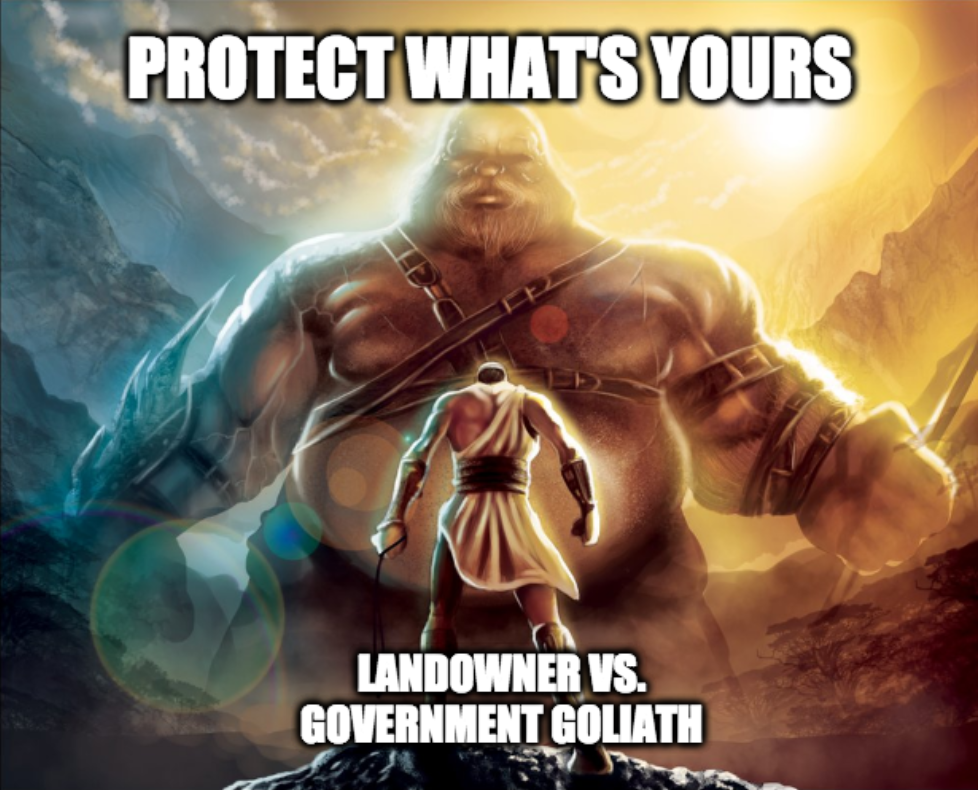But that's exactly what's in store thanks to the Infrastructure Investment and Jobs Act (aka "Bipartisan Infrastructure Bill" aka "Biden's Build Back Better"). This bloated government giveaway gave the federal government the power to overturn a state utility commission decision with 4 little words, "has denied an application." If a state has denied an application for an electric transmission permit, the federal government can overturn that and empower the transmission company with federal eminent domain.
The U.S. Department of Energy and the Federal Energy Regulatory Commission are working in cahoots to increase electric transmission lines 3 times over. That's right, for every transmission line you see now, there will be 3 new ones, if someone doesn't stop them. Do we need that much transmission? Not according to the regional transmission planners/operators that keep our grid going at a reasonable cost. It's just the latest "green new deal" theory, after their last one didn't turn out so good. Because intermittent generation sources like wind and solar cannot keep the lights on all the time, now they have turned to transmission from other parts of the country to keep the lights on when the sun sets and the wind dies. It's all about building transmission, anywhere, by anyone. Nothing scientific or coordinated about it. If some elite speculator rolls out of bed one morning and wants to build a transmission line between, say the Oklahoma panhandle and Memphis, then all he has to do is ask his pals at the DOE to create a National Interest Electric Transmission Corridor (NIETC) that corresponds with his preferred route. Once designated using a very subjective and undefined process (remember, they want lots of transmission, everywhere, there are no standards), then the Federal Energy Regulatory Commission (FERC) has the ability to site and permit the transmission line in the event that a state denies a permit for the unneeded, uneconomic transmission brain fart.
FERC recently created some new rules to update its regulations governing its permitting process to go along with the new legislation. One of the major things FERC did in its proposed rules was to propose that transmission companies be permitted to begin the FERC permitting process as soon as they file a state application. That means that the state utility commission case will be going on at the same time as the FERC permitting case, and you'll be expected to participate in both of them to preserve your rights to appeal. The second is to ask transmission owners to voluntarily comply with a completely meaningless "code of conduct" for land acquisition agents. The legislation requires "...the Commission to determine, as a precondition to receiving eminent domain authority, that the permit holder has made good faith efforts to engage with landowners and stakeholders early in the permitting process." FERC thinks that having a "code of conduct" and making transmission owners submit reports of their landowner contacts will somehow prove "good faith."
Next, FERC opened a comment period on its Rulemaking. More than 50 comments were filed on Wednesday. It will come as no surprise that at least half of them were from a plethora of "clean energy" groups (some I have never heard of before) and these commenters just LOVE the new rules and FERC's permitting authority. Perhaps most galling of all is their pretension that they somehow speak for landowners affected by transmission and therefore if they say FERC's new rules are good for landowners, they must be. It doesn't seem to matter that these are all the same groups that intervene in the state permitting cases to advocate FOR the transmission project and against landowners. Somehow they can re-create themselves as landowner representatives at FERC, even though they have never been affected by a transmission project or even spoken to a landowner who has been. I found this passage in the comments of Niskanen Center to be so much pompous junk.
Niskanen represents landowners impacted by interstate gas projects approved by the
federal government despite a demonstrated lack of public or market need in court and
administrative proceedings, including before FERC. Best practices and lessons-learned from
Niskanen’s substantial work with impacted landowners and communities on such proposed interstate gas projects inform and guide our comments here on FERC’s proposed revisions to its Backstop Authority regulations. Niskanen aims to establish a purposefully defined federal role in electricity transmission infrastructure siting and permitting, including specific circumstances under the Backstop Authority, to enable a repeatable, scalable process for the development of much-needed interstate transmission lines.
There is a Need for Increased Transmission Development and Use of the Commission's Backstop Authority
But they're not the only one. There was a virtual parade of idiots who know nothing about transmission telling FERC how great thou art. If it wasn't for a group of landowners who have actually been impacted by transmission proposals, their hubris might have worked.
Impacted Landowners filed these comments.
| rm22-7_final.pdf |
Meanwhile, as the FERC battle is waged, another one starts at the DOE, who is now seeking public comment on its proposal to let transmission developers request an NIETC for their project's route, instead of DOE developing needed routes and then soliciting competitive projects to fill them. It's quick and easy to comment. Just go here and click on the "Submit a Formal Comment" button. You can even submit an anonymous comment instead of entering your name and contact info. Have fun with that!
As we said in our FERC comments, we shouldn't have to make protecting our land from government intrusion a part of our business plan.

 RSS Feed
RSS Feed